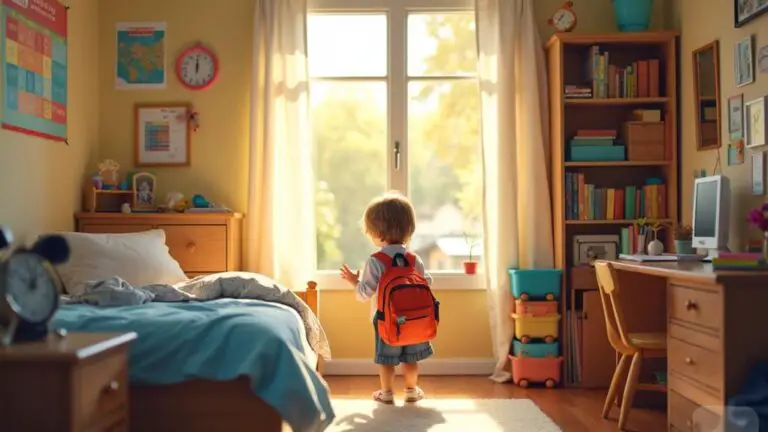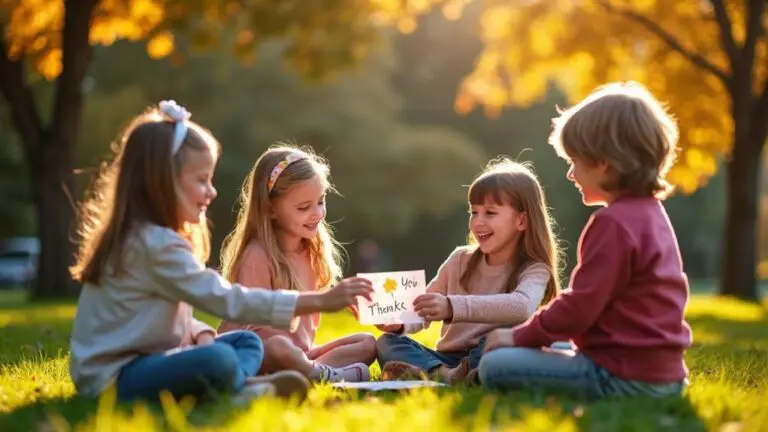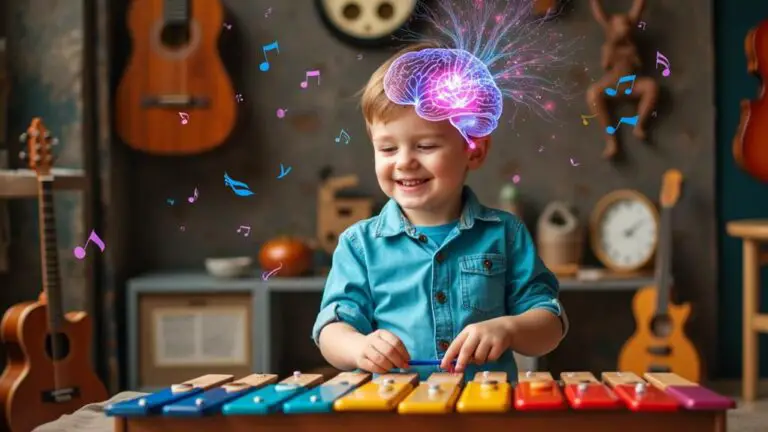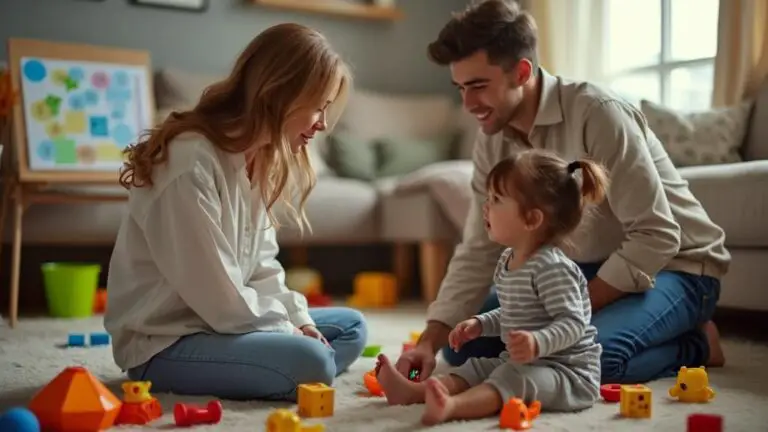Fostering Empathy in Children
I've always been fascinated by the concept of empathy and its essential role in shaping young minds. As someone who's worked with children for years, I've seen firsthand how fostering empathy can transform a child's interactions and worldview. It's not just about teaching kids to be nice; it's about equipping them with a fundamental life skill that'll serve them well into adulthood. But here's the thing: nurturing empathy isn't always straightforward. There are challenges and nuances that many parents and educators might not anticipate. So, what exactly does it take to raise truly empathetic children in today's complex world?
Key Takeaways
- Model empathy in daily interactions, as children learn by observing adult behavior and responses.
- Use storytelling and role-playing to help children practice perspective-taking and understanding others' feelings.
- Engage in open conversations about emotions, validating children's experiences and encouraging emotional expression.
- Participate in community service as a family to enhance understanding of others' experiences and needs.
- Read emotionally rich books and discuss characters' feelings to promote reflection and emotional intelligence.
Understanding Empathy in Children
Understanding empathy in children involves recognizing five key aspects of this essential social skill. First, it's the ability to understand and share others' feelings, which requires recognizing different emotions and perspectives.
Second, empathy development starts with secure relationships with caregivers, helping children navigate their emotions effectively.
Third, important milestones include social referencing at 6 months and theory of mind between 18-24 months, fundamental for understanding others' viewpoints.
Fourth, empathy encompasses recognizing common emotions like happiness, sadness, and anger, and imagining appropriate responses to others' feelings.
Finally, it's a gradually developing skill that requires consistent practice and communication about emotions.
I've found that fostering empathy in children is significant for their social interactions and relationships, making it a cornerstone of their emotional growth and well-being.
Strategies for Developing Empathy
Parents and educators play an essential role in fostering empathy in children. To help children learn to understand the feelings of others, I've found that storytelling and role-playing are powerful tools. These activities encourage perspective-taking, allowing kids to step into someone else's shoes.
I also believe it's vital to model empathy in our daily interactions, as children learn by observing adults.
Here are three effective strategies to develop empathy:
- Engage in community service as a family
- Read books with emotionally rich characters and discuss feelings
- Facilitate open conversations about emotions, validating children's experiences
When we encourage children to ask questions and reflect on others' experiences, we're nurturing their empathetic skills.
Role of Parents and Educators
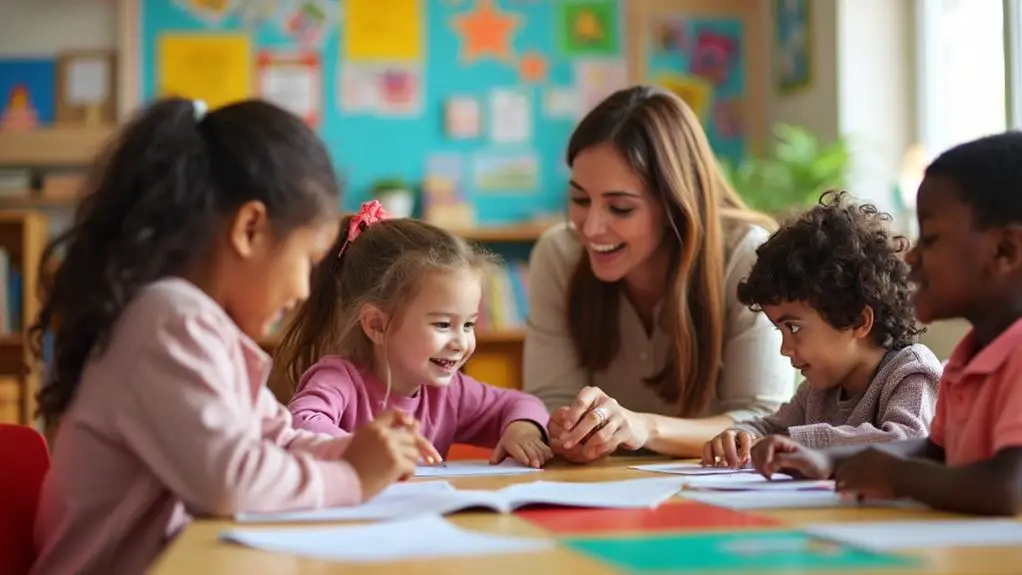
While strategies for developing empathy are important, the role of parents and educators is paramount in shaping a child's empathetic abilities. I believe parents must model respect and compassion in daily interactions, reinforcing empathetic behaviors at home.
Educators can integrate empathy-focused lessons into their curricula, encouraging students to discuss feelings and diverse perspectives.
Open communication about emotions between parents, educators, and children is vital. It strengthens connections and promotes a supportive environment for empathy development.
I've found that creating a safe space for children to share experiences and feelings is essential, as supportive adult relationships greatly impact their ability to empathize with others.
Schools should prioritize kindness alongside academic achievements. This dual focus nurtures a culture of empathy and respect among students, fostering emotional intelligence that'll serve them well throughout their lives.
Measuring Empathy Progress
Measuring empathy progress in children involves three primary methods: self-report surveys, peer evaluations, and observational techniques. I've found that these assessments provide valuable insights into how children develop empathy and understanding emotions.
Observational methods are particularly effective, allowing me to witness empathetic interactions in real-time. Longitudinal studies have helped me track empathy growth over time, revealing trends as children mature.
To foster a supportive environment, I've implemented strategies like:
- Kindness boards in classrooms
- Playworks programs
- Targeted interventions based on progress assessments
These tools not only measure empathy but also encourage empathetic actions. By combining various assessment methods, I've gained a thorough understanding of children's empathy levels. This knowledge informs my approach to developing tailored interventions, ensuring that each child receives the support they need to cultivate empathy effectively.
Conclusion
I've learned that fostering empathy in children is vital for their social and emotional development. By implementing strategies like storytelling, role-playing, and community service, I can help kids understand others' feelings and perspectives. As a parent or educator, I'll model empathetic behavior and create an environment that encourages open discussions about emotions. I'll also integrate empathy-focused lessons into daily activities. By measuring progress, I can guarantee children are developing this essential skill effectively.


